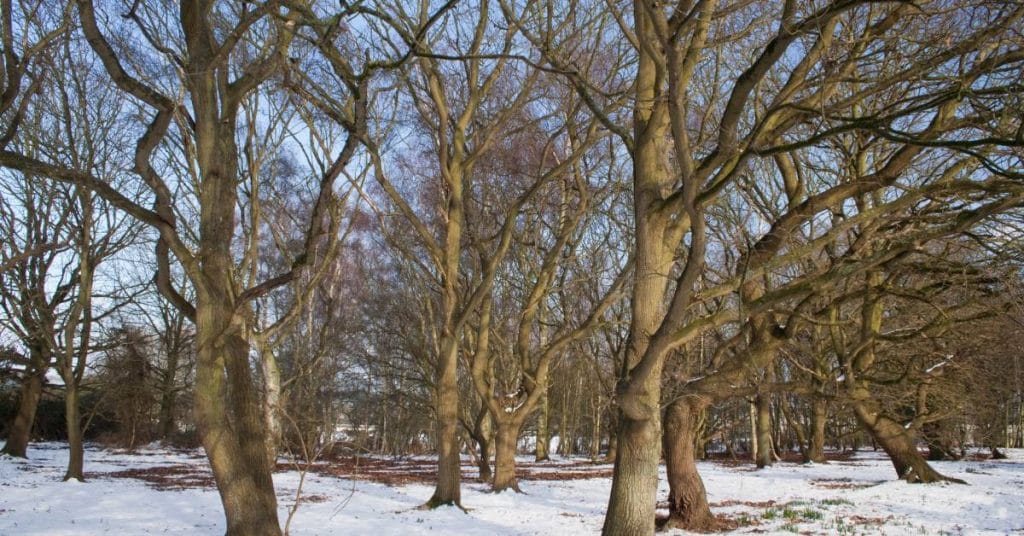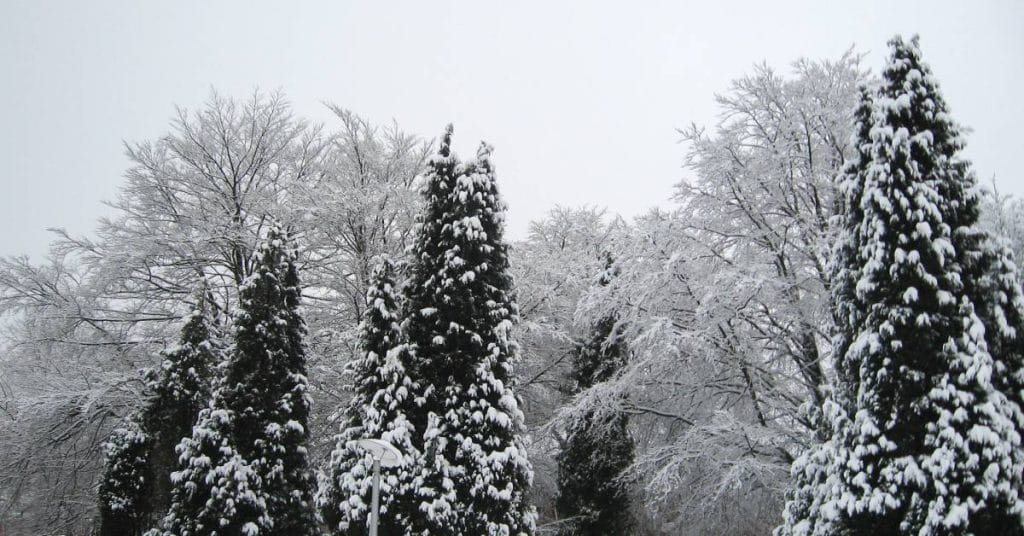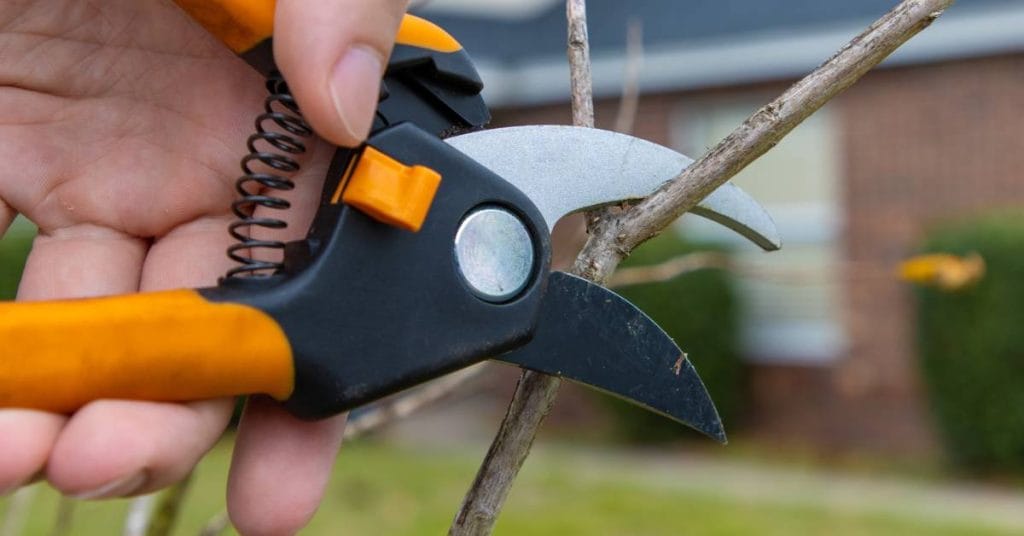Which Trees Go Dormant in the Winter and Why?

Nature goes through some noticeable changes as the weather switches from one season to the next, especially trees. Winter triggers a unique process called dormancy as the season starts to bear down on the trees in your yard. This survival mechanism allows trees to conserve their energy and endure the harsh weather conditions ahead. Understanding this phenomenon enriches your knowledge and facilitates better care for your landscapes during the colder months.
Not all trees go through dormancy, so it’s best to know which trees go dormant in the winter and why. Some of the information you will explore explains the science behind dormancy and highlights the behavior you can expect when your trees are experiencing dormancy. Additionally, you will learn how to properly maintain your landscape’s health and integrity by caring for your dormant trees.
What Is Dormancy?
Dormancy is a natural adaptation for trees, allowing them to preserve their energy during periods of stress. Trees will pause their growth and metabolic activity to withstand freezing temperatures and reduced water availability. Trees will receive temperature drops and shortened daylight hours as signals to prepare for winter dormancy.
A tree’s dormancy has two phases: Endo-dormancy and Eco-dormancy. Endo-dormancy is the first phase. The tree’s internal biological clock slows, preventing growth, no matter the external conditions. Eco-dormancy, the second phase, deals with external environmental factors, such as cold temperatures and maintaining a dormant state. The trees resume their growth process in more favorable conditions when spring comes.
Dormancy also involves the shedding of leaves for deciduous trees, a process called abscission. These trees reduce water loss and eliminate the risk of frost damage to their leafy structures by dropping their foliage. Evergreens experience a milder form of dormancy, slowing their growth but retaining their needles.
Deciduous Trees and Winter Dormancy

Maples, oaks, birches, elms, and other deciduous trees are among the most recognizable species that go dormant in the winter. These trees display vibrant fall colors. Shedding leaves to conserve energy for the upcoming harsh winter is a clear sign of dormancy in these species.
Some of the primary triggers for deciduous trees are temperature changes and the amount of daylight exposure. Deciduous trees initiate processes to reallocate nutrients to their root systems as the days grow shorter in the fall. They use this reserve of energy to sustain themselves until the growing season resumes. Since there is less soil moisture availability during the winter months, the absence of leaves can further reduce the tree’s need for water.
Evergreens and Partial Dormancy
While pines, spruces, firs, and other evergreen trees retain their needles throughout the year, they also enter a state of dormancy during winter. Their metabolic activity slows significantly, preserving energy and reducing the need for water. Unlike their deciduous counterparts, evergreen trees have needles coated in a waxy substance that minimizes water loss while providing insulation from frost.
Evergreen trees have an interesting adaptation that allows their needle-like foliage to conduct photosynthesis even during winter dormancy. They generate small amounts of energy when exposed to sunlight, giving them a slight advantage as growth resumes in early spring.
Why Certain Trees Go Dormant
The question of which trees go dormant in the winter and why is easy to answer by examining the evolution of trees in different climates. Dormancy serves as a defense mechanism to help trees adapt to unfavorable environmental conditions. Different tree species have evolved to enter dormancy as a means of survival in temperate regions where winter is harsh.
Trees that go dormant do so to prevent desiccation (extreme water loss) and cellular damage caused by freezing temperatures. Frost can rupture plant cells, leading to irreversible damage. Dormant trees avoid these risks by halting their growth and reducing internal water content.
This dormancy allows trees to conserve sunlight, water, and nutrient resources. During this dormant period, trees allocate the stored resources more efficiently to sustain their life processes without expending any unnecessary energy.
Caring for Dormant Trees

Care for your trees during the winter while they are dormant to ensure their long-term health. Maintain them by consulting a professional arborist for invaluable advice on caring for each species on your land. By doing so, you can help your trees recover quickly once the warmer weather returns.
One suggestion you might get from the arborist is to prune your trees. Pruning is one effective method for maintaining dormant trees. Tree branches become clearly visible with reduced foliage, making it easier to identify and remove dead or diseased limbs. Pruning minimizes future health risks and encourages new growth during spring.
A second suggestion is applying mulch around the tree’s base. Mulch acts as an insulating layer, preventing soil temperature fluctuations and retaining moisture. Dormant trees require much less watering, so learn how much mulch is best for each type of tree. Excessive winter watering can lead to waterlogged soil, which harms root systems.
A professional tree service can provide the skills, knowledge, tools, and labor necessary to care for dormant trees effectively for homeowners who want the ease of having an expert. These experts can complete services that include pruning, soil aeration, and health assessments, ensuring your trees remain robust throughout the year.
Signs That a Tree Is Not Entering Dormancy Properly
Most trees will naturally enter dormancy as winter approaches. However, certain stress factors, such as prolonged warmth or disease, can interfere with them going into dormancy. For example, a deciduous tree continually displaying green leaves late into the season may indicate that it hasn’t properly shut down for winter. Another sign to look for is whether a tree is still actively growing or forming buds, indicating a possible issue with the dormancy cycle.
Inspect your trees regularly, stay alert to these signs, and seek professional advice to help your tree enter dormancy and remain healthy throughout the winter.
The Role of Dormancy in Ecosystems
Dormancy also serves a broader ecological purpose. It contributes to nutrient cycling by depositing leaves, needles, and organic matter onto the forest floor, enriching the soil. These nutrients sustain understory vegetation and microbial life, boosting biodiversity.
The dormant phase of trees aligns with the lifecycles of many animals in the surrounding ecosystem. For example, squirrels use the dormant period to gather and store food when preparing for winter, and some animals use fallen leaves for shelter during hibernation.
Understanding the ecological implications of tree dormancy fosters a deeper appreciation for its importance for many homeowners and environmentalists alike. Maintaining healthy landscapes and actively supporting biodiversity is a priority for many who want to contribute positively to the ecosystem near them.
Supporting Your Trees Year-Round
Trees are invaluable assets in any outdoor space, providing shade, beauty, and environmental benefits. Keeping your trees healthy during their dormancy stage directly correlates to how healthy they are during the growing season in the spring. Thoughtful care during winter will yield long-term rewards, whether you have deciduous or evergreen species on your property.
All Around Arbor offers specialized services for your landscaping needs if you’re uncertain about how to care for your dormant trees or require assistance. Contact us today to give your trees the professional attention they may need this winter.


Comments